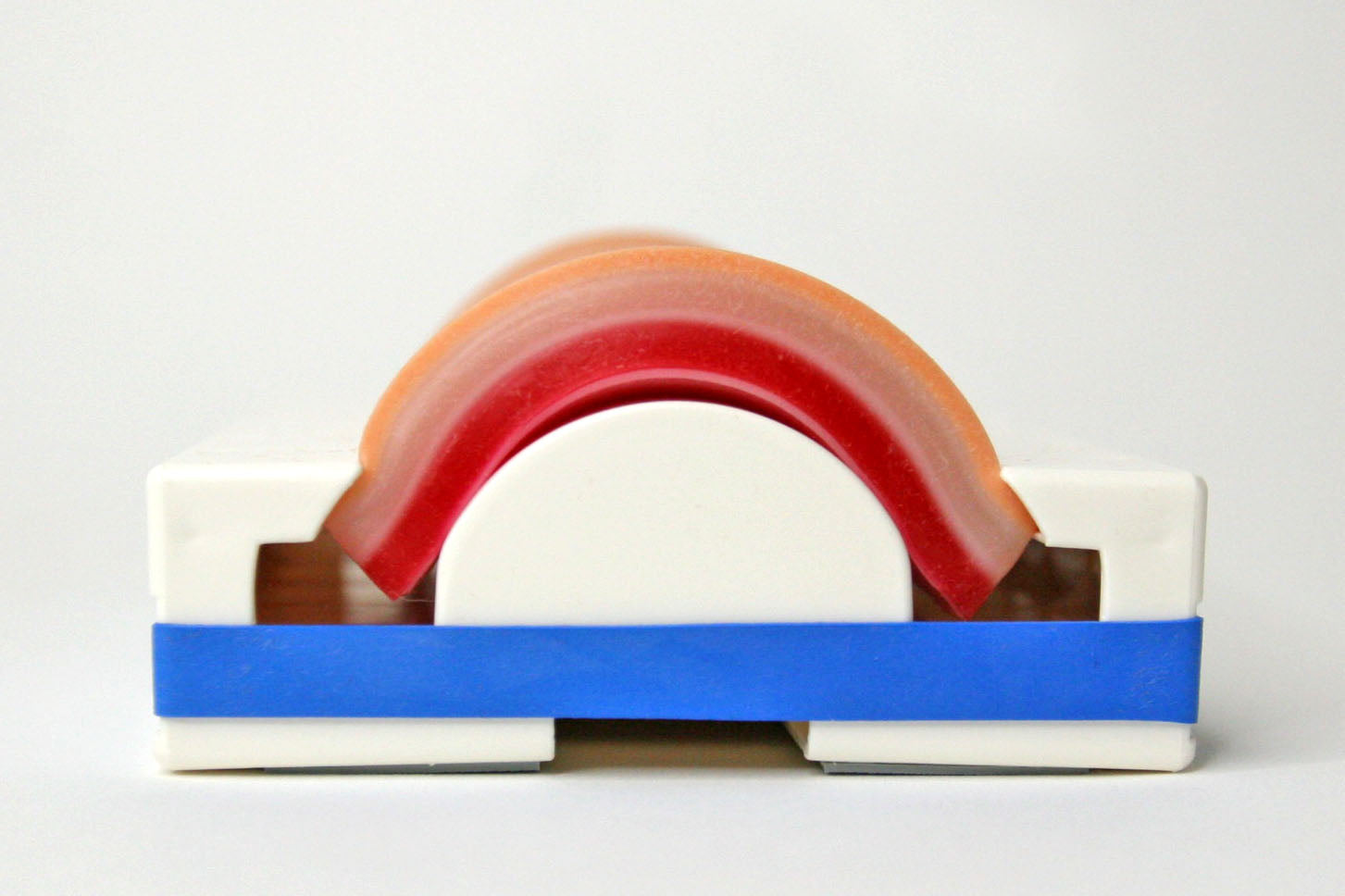

To learn more about our RealSuture 6-Layer Suture Pad click here.
Procedural surgical skills such as suturing, knot tying, incision and drainage, and excision of lesions, among others, ought to be frequently practiced on simulated sets long before attempting them on patients. To cut costs while still providing the practical simulative experience, medical institutions and individuals may choose to make their own simulated materials. Just as you can buy a piece of fabric for $2 and sew up your own t-shirt, you can make your own suture pad for at-home practice. Of course, this may sound like an easy and low-cost alternative to professionally made simulated kits. However, the true cost in terms of time, effort, learning curve, and re-usability should all be considered before going down the homemade approach.
MONETARY COST
It may initially appear that materials costs are much less for the same number of practice units when opting to make your own. That assumes we are comparing apples to apples as the quality and materials of the simulated materials often differ significantly. The difference between professionally made practice materials and homemade materials can be significant. A high-quality suture pad, for example, will have multiple layers that each react the way that live human tissue will in a clinical setting. Additionally, the number of sutures that can be placed in these pads before a pad needs to be replaced is significant. A small SurgiReal 6-layer pad will hold 1,500 sutures. That’s the difference between having a peanut butter and jelly sandwich for supper or full meal with drinks and dessert. Both are technically considered dinner, though they are much different meals.
That’s just the surface. If we dive deeper, there are additional costs that make homemade materials more expensive. When broken down hourly, the amount paid to have one or more professors, lab coordinators, or simulations technicians make materials in house over several days can make the overall cost fairly comparable. The additional investment for higher quality materials is often justifiable for many programs and, if not, the educational investment for the long-term health benefit of patients usually pushes professionally made materials over the finish line. After all, ever return visit to the office for an additional incident in infection, suture failure, wound reopening, aesthetic enhancement due to scarring, or general ineffectiveness costs far more in patient time and money than the difference between a home-made practice material and a high quality and representative practice kit.
STUDENT AND PATIENT OUTCOMES
When it comes to excellence in academia, high quality medical simulations have been shown to improve student learning and efficacy in actual clinical settings (Routt et al., 2015). Therefore, to provide the best medical training to apprentice practitioners, it is essential to offer the best tools for learning and practice. Student habit formation during their training years will inevitably affect the success of their later practice. Once student practitioners learn one way, it takes considerable effort, time, and awareness to unlearn and develop new neurological pathways. Surgical skills such as making incisions and suturing are fundamental muscle memories that can become deeply etched in a learner’s mind. The rate of precision in applying the correct pressure, in the right region, with the correct angle, accompanied with the best practices for avoiding infections and complications all come down to how well the practitioner knows the anatomy and the amount of practice they have had. It is hard to justify the value of one’s time and effort when practicing on unrealistic simulative materials that fail to provide the experience needed for real life situations. In the end, the patients are the ones to ultimately withstand the worst of poorly executed procedures.
OPPORTUNITY COST
Time is another key factor to consider in all this. The human element should be considered in this equation and valued appropriately. There are many YouTube videos of people taking a minimum of 4 hours to make a SINGLE small, thin suture pad with silicone and various other materials. Instead of focusing on lecture material, working on their research, advancing the institution into new frontiers, the focus is turned to creating less effective materials that under-prepare future healthcare providers. What’s more, staff at their hourly salary making these less effective materials over several days will counterintuitively cost the university more in the end. These simulated materials also tend to have great variability and discrepancies if exact measurements and amounts are not measured. Professionally made simulated materials are standardized in their production, which can ensure that all users have the same learning experience.
Providing trainees with the optimal means to learn correctly early in their training will set them up for later success without the need to relearn proper technique when interacting with patients. This will inevitably benefit the reputation of the school program, pedagogical excellence, student competence, and, most importantly, patient health and recovery.
To learn more about our RealSuture 6-Layer Suture Pad click here.
REFERENCES
- Routt E., Mansouri Y., de Moll E.H., Bernstein D.M., Bernardo S.G., Levitt J. Teaching the Simple Suture to Medical Students for Long-term Retention of Skill. JAMA Dermatol. 2015 Jul;151(7):761-5. doi: 10.1001/jamadermatol.2015.118. PMID: 25785695.
- Wongkietkachorn A., Rhunsiri P., Boonyawong P., Lawanprasert A., Tantiphlachiva K. Tutoring Trainees to Suture: An Alternative Method for Learning How to Suture and a Way to Compensate for a Lack of Suturing Cases. J Surg Educ. 2016 May-Jun;73(3):524-8. doi: 10.1016/j.jsurg.2015.12.004. Epub 2016 Feb 20. PMID: 26907573.
